Studies on C.S. Lewis Collection (22 vols.)
Digital Logos Edition
Overview
C.S. Lewis was not a professional theologian—something he freely admitted. For many years, this lack of official credentials resulted in an unfortunate lack of scholarly engagement with his life and works. Exploring Lewis’ literary, theological, and philosophical genius, Lewis experts such as P.H. Brazier, Chad Walsh, and Walter Hooper fill this longstanding gap. Though written for academics and students, these works are also for ordinary Christians who, like Lewis, don’t have a theology degree. Readers of every background who enjoy Lewis’ fiction, apologetics, and scholarship will also enjoy these creative studies.

- Explores C.S. Lewis’ literary, theological, and philosophical genius
- Engages Lewis’ work from an academic perspective
- Adresses readers from all backgrounds
- Includes the 2007–2014 volumes of Sehnsucht: The C.S. Lewis Journal
- Title: Studies on C.S. Lewis Collection
- Publisher: Wipf & Stock
- Volumes: 22
- Pages: 4,824
- Christian Group: Evangelicals; Anglican
- Resource Type: Monographs
- Topic: Apologetics; Christianity
- C.S. Lewis and a Problem of Evil: An Investigation of a Pervasive Theme by Jerry Root
- C.S. Lewis: A Map of His Worlds by Margaret Patterson Hannay
- C.S. Lewis—An Annotated Bibliography and Resource by P.H. Brazier
- C.S. Lewis—On the Christ of a Religious Economy, 3.1: Creation and Sub-Creation by P.H. Brazier
- C.S. Lewis—On the Christ of a Religious Economy, 3.2: Knowing Salvation by P.H. Brazier
- C.S. Lewis—The Work of Christ Revealed by P.H. Brazier
- C.S. Lewis: Revelation, Conversion, and Apologetics by P.H. Brazier
- C.S. Lewis: Apostle to the Skeptics by Chad Walsh
- C.S. Lewis: Defender of the Faith by Richard B. Cunningham
- C.S. Lewis: Spirituality for Mere Christians by William Griffin
- The Literary Legacy of C.S. Lewis by Chad Walsh
- The Longing for a Form: Essays on the Fiction of C.S. Lewis by Peter J. Schakel
- Past Watchful Dragons: The Origin, Interpretation, and Appreciation of the Chronicles of Narnia by Walter Hooper
- Word and Story in C.S. Lewis: Language and Narrative in Theory and Practice by Peter J. Schakel and Charles A. Huttar
- Sehnsucht: The C.S. Lewis Journal Volume 1, Issue 1 edited by Grayson Carter
- Sehnsucht: The C.S. Lewis Journal Volume 2, Issue 1 edited by Grayson Carter
- Sehnsucht: The C.S. Lewis Journal Volume 3 edited by Grayson Carter
- Sehnsucht: The C.S. Lewis Journal Volume 4 edited by Grayson Carter
- Sehnsucht: The C.S. Lewis Journal Volumes 5–6 edited by Grayson Carter
- Sehnsucht: The C.S. Lewis Journal Volumes 7–8 edited by Grayson Carter
This title is included in the following collections
You can save when you purchase this product as part of a collection.
Logos 7 Anglican Platinum Lega...
$1,499.99$1,499.99Logos 7 Anglican Diamond Legac...
$2,999.99$2,999.992025 Portfolio Library
$4,749.99$3,562.492025 繁體中英雙語典藏版圖書資料庫
$5,999.99$4,499.99
- $5,999.99$4,499.99
- $4,749.99
- $6,399.99$4,799.99
- $10,999.99$8,249.99
- $11,593.84$8,499.99
- $23,999.99$17,999.99
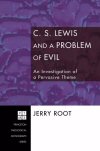
C.S. Lewis was concerned about an aspect of the problem of evil he called subjectivism: the tendency of one’s perspective to move towards self-referentialism and utilitarianism. In C.S. Lewis and a Problem of Evil, Jerry Root provides a holistic reading of Lewis by walking the reader through all of Lewis’ published work as he argues Lewis’ case against subjectivism. Root also reveals that Lewis consistently employed fiction to make his case, as virtually all of his villains are portrayed as subjectivists. More than an exposition of Lewis, Root shows how the Oxford don’s writings were prophetic, and this book is a timely investigation into the problem of evil today.
Few people know Lewis as well as Jerry Root, and few ideas were more central to Lewis’ thought than his critique of subjectivism.
—Alan Jacobs, author, The Narnian: the Life and Imagination of C.S. Lewis
Few people in the world have a richer knowledge of C.S. Lewis’ works or a more energetic intellectual curiosity than Jerry Root.
—Wayne Martindale, author, Beyond the Shadowlands: C.S. Lewis on Heaven and Hell
Anyone with a serious interest in Lewis or the problem of evil will be fascinated by this major contribution to Lewis studies.
—Lyle W. Dorsett, author, Seeking the Secret Place: The Spiritual Formation of C.S. Lewis
Jerry Root is assistant professor of evangelism and associate director of the Institute for Strategic Evangelism at Wheaton College, Wheaton, Illinois. He is also visiting professor at Biola University and Talbot Graduate School of Theology in California. He is author of The Sacrament of Evangelism, The Soul of Lewis: A Meditative Journey through Twenty-six of His Best Loved Writings, and The Quotable Lewis.
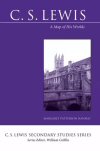
Readers from around the world delight in the Narnia tales, the adult novels, and the sparkling Christian apologetics of C.S. Lewis. His literary criticism continues to provoke and enlighten. Here now is an excellent map of Lewis’ two worlds: his life and his imagination. In an appealing style unhampered by academic jargon, Margaret Patterson Hannay records the life of a man who progressed from arrogant dogmatism to gentleness. She concisely summarizes each of Lewis’ major works.
A superb introduction to Lewis’ life and works—thorough, reliable, insightful, and well-written.
—Peter J. Schakel, Peter C. and Emajean Cook Professor of English, Hope College
Margaret Patterson Hannay is professor of English at Siena College. She has written biographies of Mary Sidney, countess of Pembroke, and of Lady Mary Wroth. She is also the editor of As Her Whimsey Takes Her: Critical Essays on Dorothy L. Sayers, and author of numerous articles on Renaissance writers.
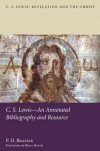
P.H. Brazier’s bibliography and resource consists of a chronological introduction to the development of C.S. Lewis’ works, a copious bibliography and guide to the study of Lewis, an introductory essay on Christology in Lewis, and a glossary for those unfamiliar with some of the background and terms to Lewis’ understanding of revelation and the Christ. It will be an invaluable resource for all scholars of C.S. Lewis.
Anyone who wants to understand the theological and literary architecture of Lewis’ Mere Christianity will benefit from this book.
—Peter Sanlon, lecturer in doctrine and church history, Oak Hill College
As a reference work, the comprehensive bibliography lays the foundation and serves as a starting point for the next generation of Lewis scholarship.
—Neil Hunter Raiford, instructor, Whitesburg Christian Academy
Brazier’s book [offers] an outstanding bibliography with an insightful essay on Lewis and Christology, as well as a superb glossary. No one undertaking a serious reading of Lewis should be without it.
—Mark Brumley, president, Ignatius Press
P.H. Brazier holds degrees in systematic theology from King’s College London, where he completed his PhD on Barth and Dostoevsky. He is the editor of Colin E. Gunton’s The Barth Lectures and The Revelation and Reason Seminars. He is the author of C.S. Lewis–The WOrk of Christ Revealed and C.S. Lewis: Revelation, Conversion, and Apologetics.
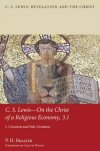
C.S. Lewis—On the Christ of a Religious Economy, 3.1: Creation and Sub-Creation opens with Lewis on creation, the fall, and humanity’s standing before God, and how such an understanding permeated all his work. P.H. Brazier’s book is written for academics and students, but also, crucially, for ordinary Christians without a theology degree, who enjoy and gain sustenance from reading Lewis’ work.
A pleasure to read for theologians and literary aesthetes alike.
—Gerald L. Bray, research professor of divinity, Beeson Divinity School
Never bogging down in obscure theological and philosophical discussion, Brazier leads us unerringly through the subtlety and rigor of Lewis’ mind and imagination.
—Suzanne M. Wolfe, professor of English, Seattle Pacific University
Brazier’s lucid and sympathetic explanations of Lewis’ thought and theology provide an enormously valuable contribution to the existing corpus of Lewis studies.
—Lucy Peppiatt, dean, Westminster Theological Center
P.H. Brazier holds degrees in systematic theology from King’s College London, where he completed his PhD on Barth and Dostoevsky. He is the editor of Colin E. Gunton’s The Barth Lectures and The Revelation and Reason Seminars. He is the author of C.S. Lewis–The WOrk of Christ Revealed and C.S. Lewis: Revelation, Conversion, and Apologetics.
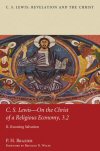
What did C.S. Lewis say of humanity in relation to God—incarnate, crucified, resurrected, and ascended for humanity? What of Lewis’ own death, and that of his wife? What does this tell us about the triune God of love? P.H. Brazier’s book is written for academics and students, but also, crucially, for ordinary Christians without a theology degree, who enjoy and gain sustenance from reading Lewis’ work.
Paul Brazier has given us something new . . . a full account of Lewis’ theology, set out in systematic order, with attention paid to the developments in his thought and to his biography.
—Stephen R. Holmes, senior lecturer in systematic theology, University of St. Andrews, Scotland
Readers of C.S. Lewis will welcome this patient and penetrating analysis of the Christian vision he elaborated and communicated.
—Gerald O’Collins, professor emeritus, Gregorian University, Rome
This volume offers a timely in-depth study of Lewis’ thoughts on the church and an eminently useful exposition of Lewis on the ‘last things.’
—Henk van Wingerden, minister, Hervormde Gemeente Protestant Church of the Netherlands
P.H. Brazier holds degrees in systematic theology from King’s College London, where he completed his PhD on Barth and Dostoevsky. He is the editor of Colin E. Gunton’s The Barth Lectures and The Revelation and Reason Seminars. He is the author of C.S. Lewis–The WOrk of Christ Revealed and C.S. Lewis: Revelation, Conversion, and Apologetics.
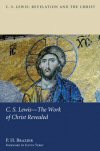
C.S. Lewis—The Work of Christ Revealed focuses on three aspects of Lewis’ theology and philosophy: his doctrine of Scripture, his famous mad, bad, or God argument, and his doctrine of Christological prefigurement. In each area, P.H. Brazier reveals how Lewis innovates within tradition. Brazier traces how Lewis accorded a high revelatory status to Scripture, but ultimately shrank from a theology of inerrancy.
This insightful, thorough, and learned exposition of the quintessence of Lewis’ theology also suggests a reading of his fiction and literary theory, bringing readers back to Lewis again and again.
—Sorina Higgins, book review editor, Sehnsucht: The C.S. Lewis Journal
Crucially, for those evangelicals undecided on aspects of Lewis's theology, Brazier's masterful examination of Lewis on Christology and revelation offers welcome reassurance
—Calvin L. Smith, author, Pentecostal Power
In this rigorous and searching study of the theology of C.S. Lewis, Paul Brazier locates Lewis within the wider context of theological scholarship and shows him to be a theologian to be reckoned with in his own right, rather than simply a popularizer of Christian faith.
—Murray Rae, professor and head of the department of theology and religion, University of Otago, New Zealand
P.H. Brazier holds degrees in systematic theology from King’s College London, where he completed his PhD on Barth and Dostoevsky. He is the editor of Colin E. Gunton’s The Barth Lectures and The Revelation and Reason Seminars. He is the author of C.S. Lewis—An Annotated Bibliography and Resource and C.S. Lewis–On the Christ of a Religious Economy.
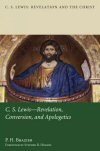
P.H. Brazier studies the understanding of Christ, and therefore the revelation of God, in the work of C.S. Lewis. His systematic study of Lewis’ theology, Christology, and doctrine of revelation draw on his life and work. The book is written for academics and students, but also, crucially, for ordinary Christians without a theology degree, who enjoy and gain sustenance from reading Lewis’ work.
Paul Brazier has done the church and the academy a great service in this . . . serious and accessible study of Lewis.
—Justyn Terry, dean, president, and associate professor of systematic theology, Trinity School for Ministry, Ambridge, Pennsylvania
. . . a genuine work of scholarship that is not only worthy of the great man but also provides for us what Lewis never did himself: a systematic philosophical theology of his religious method and beliefs.
—Andrew Walker, emeritus professor of theology, religion, and culture, King’s College, University of London
[T]he fact that Lewis was not a professional theologian has led to him being overlooked by those who were most able to engage critically and creatively with his writings. Fortunately . . . a new generation of scholars has taken up the task.
—Grayson Carter, editor, Sehnsucht: The C.S. Lewis Journal
P.H. Brazier holds degrees in systematic theology from King’s College London, where he completed his PhD on Barth and Dostoevsky. He is the editor of Colin E. Gunton’s The Barth Lectures and The Revelation and Reason Seminars. He is the author of C.S. Lewis—An Annotated Bibliography and Resource and C.S. Lewis–On the Christ of a Religious Economy.
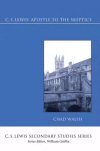
That a writer of C.S. Lewis’ scholarly and literary stature should publish more than a dozen books directly or indirectly defending Christianity is news. That his works should have such wide repercussions is still more significant news, and merits a second thought. What does it mean when his books become best sellers? Does it indicate anything about the intellectual currents of the present time? If so, it seems time to examine more closely the exact kind of Christianity and philosophy presented in Lewis’ writings, and the literary techniques that have brought him into the forefront of authors dealing with religious themes.
Chad Walsh (1914–1991) was a poet and teacher who established himself as the American authority on C.S. Lewis. He was professor of English at Beloit College in Wisconsin and the author of over 20 books. His introduction to theology, Campus Gods on Trial, teaches Christian students how to deal with instructors and classmates who ignore or are ignorant of the basics of theology. C.S. Lewis’ The Four Loves is dedicated to Walsh.
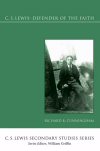
C.S. Lewis took up his apologetic pen because he felt that most theologians spoke jargon. “Any fool can write learned language,” he said, “the vernacular is the real test. If you can’t turn your faith into it, then either you don’t understand it or you don't believe it.” In the infernal correspondence of Screwtape, the haunting myths of his Space Trilogy, and the allegories of Narnia, he brings the reader face to face with transcendental values and existential questions. Richard Cunningham evaluates the different kinds of literature Lewis uses as apologetic instruments, studies the devices and techniques of debate he employs to communicate his faith to unbelievers, and deduces some pertinent principles to help others define and understand the Christian faith.
Richard B. Cunningham is a retired professor of Christian philosophy at The Southern Baptist Theological Seminary in Louisville, Kentucky. Prior to that he was professor of systematic theology and philosophy of religion at Golden Gate Baptist Theological Seminary in Mill Valley, California, and at the Baptist Theological Seminary in Ruschlikon, Switzerland. After his retirement, he served as director of graduate studies and professor of theology and philosophy at the Hong Kong Baptist Theological Seminary.
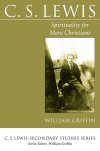
Discover a livable and decidedly witty lay spirituality from the most amusing Christian intellectual of our time. From his autobiography, Surprised by Joy, and children’s classics, the Chronicles of Narnia, to his poems, and novels, literary criticism, theological explorations, C.S. Lewis laid down a spirituality that the “mere Christian” can live with, Monday through Saturday. In this book William Griffin, renowned Lewis scholar and biographer, captures the spirituality of Lewis’ writings and presents it in a style reminiscent of the Oxford don.
Few people today could have accomplished what William Griffin has done in this work. He has exegeted for us a central feature of the life and thinking of C.S. Lewis, namely, his spirituality . . . and he has done it with zest and aplomb.
—Richard Foster, founder, Renovaré
William Griffin is the author of Clive Staples Lewis: A Dramatic Life, and is an editor, novelist, playwright, journalist, literary agent, and publishing consultant. He served as an editor at Macmillan, New York, one of C.S. Lewis’ major publishers He has anthologized the works of not only C.S. Lewis, but also J.B. Phillips, Dorothy L. Sayers, Fulton J. Sheen, and Billy Graham.
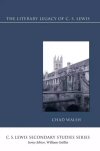
In previous works, C.S. Lewis has been read and studied as though he were two authors: the writer of Christian apologetics, and then the writer of science fiction and fantasy. This is the first major critical study to examine his work as the creation of a single unique mind.
Chad Walsh (1914–1991) was a poet and teacher who established himself as the American authority on C.S. Lewis. He was professor of English at Beloit College in Wisconsin and the author of over 20 books. His introduction to theology, Campus Gods on Trial, teaches Christian students how to deal with instructors and classmates who ignore or are ignorant of the basics of theology. C.S. Lewis’ The Four Loves is dedicated to Walsh.
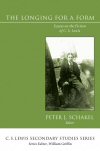
C.S. Lewis’ extremely popular works of fiction have been widely discussed in terms of the ideas and religious themes they express and defend, but less often in terms of their purely literary qualities. The Longing for a Form corrects this critical imbalance by supplying a theoretical background and detailed close readings, for a better understanding and appreciation of Lewis’ fiction as works of art.
Throughout the book, Peter J. Schakel emphasizes form—as literary kind and as structure—and pays close attention to three themes of particular importance in Lewis as a writer of fiction: objectivism, longing, and the literary artist as creator. Individually, the essays supply fresh insights into the style and meaning of specific works by Lewis. As a group they illustrate a depth, technical skill, and unity of thought and theme which have not previously been accorded Lewis as an artist in fiction.
Peter J. Schakel is Peter C. and Emajean Cook Professor of English at Hope College in Holland, Michigan. He is the author of Reason and Imagination in C.S. Lewis, The Way into Narnia: A Readers Guide, and Is Your Lord Large Enough? House C.S. Lewis Expands Our View of God.
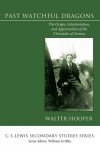
C.S. Lewis said about the Chronicles of Narnia, “I thought I saw how stories of this kind could steal past a certain inhibition which had paralyzed much of my own religion in childhood. Why did one find it so hard to feel as one was told one ought to feel about God or about the sufferings of Christ? I thought the chief reason was that one was told one ought to. An obligation to feel can freeze feelings. And reverence itself did harm. The whole subject was associated with lowered voices, almost as if it were something medical. But supposing that by casting all these things into an imaginary world, stripping them of their stained-glass and Sunday school associations, one could make them for the first time appear in their real potency? Could one not steal past those watchful dragons?”
Walter Hooper analyzes how Lewis used his fiction to express the core of the Christian religion.
Past Watchful Dragons is a deeply rewarding book.
—James Como, author, Remembering C.S. Lewis and Branches to Heaven: the Geniuses of C.S. Lewis
Walter Hooper became C.S. Lewis’ secretary just prior to Lewis’ death in 1963. Thereafter he was invited to edit Lewis’ literary remains and this has kept him busy ever since. He is coauthor, with R.L. Green, of C.S. Lewis: A Biography, author of C.S. Lewis: A Companion & Guide, and editor of The Collected Letters of C.S. Lewis. He is the literary adviser to the C.S. Lewis estate.
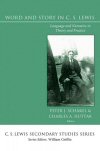
Word and Story has broken new ground by enlisting well-known scholars in the examination of Lewis’ ideas about language and narrative, both as stated in theory and as exemplified in practice. Never before has such clear, significant, and thorough work in these areas been brought together in one place.
This compilation of 16 essays demonstrates how an awareness of Lewis’ ideas about language and narrative is essential to a full understanding and appreciation of his thought and works. The contributors examine Lewis’ poetry, The Dark Woods, Studies in Words, and other works that have so far received little attention, in addition to more familiar parts of the Lewis canon.
By approaching Lewis primarily as an artist and theorist, not just a Christian apologist, these essays offer new insights into his creative imagination, critical acumen, and his craftsmanship as a writer. One comes away from this book with a fresh vision and with heightened expectation, eager to return to Lewis’ works.
One comes across many observations in this book that evoke the response, not just of an acquiescent nod, but also of further reflection.
—Owen Barfield, member, The Inklings
Peter J. Schakel is Peter C. and Emajean Cook Professor of English at Hope College in Holland, Michigan. He is the author of Reason and Imagination in C.S. Lewis, The Way into Narnia: A Readers Guide, and Is Your Lord Large Enough? House C.S. Lewis Expands Our View of God.
Charles A. Huttar is emeritus professor of English at Hope College.
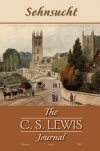
Sehnsucht: The C.S. Lewis Journal, established by the Arizona C.S. Lewis Society in 2007, is the world’s only peer-reviewed journal devoted to the study of C.S. Lewis and his writings. Sehnsucht promotes literary, theological, historical, biographical, philosophical, bibliographical, and cultural interest in Lewis and his writings. The journal includes articles, review essays, book reviews, film and play reviews, bibliographical material, poetry, interviews, and editorials. Designed for scholars from a wide variety of disciplines, as well as learned non-scholars and Lewis enthusiasts, Sehnsucht keeps you current on Lewis’ scholarship and delves deep into the significance and meaning of the Oxford don’s work.
Articles:
- “Reflections of an Editor,” by Walter Hooper
- “A Time for Joy: The Ancestry and Apologetic Force of C.S. Lewis’ Selmsucht,” by James P. Helfers
- “Reading the Middle Ages: The ‘Postmodern’ Medievalism of C.S. Lewis,” by Charles Connell
- “Grooving a Symbol: Turkish Delight in Narnia,” by Del Kehl
- “Defending the Dangerous Idea: An Update on C.S. Lewis’ Argument from Reason,” by Victor Reppert
- “All My Dogs Before Me,” by Bruce R. Johnson
Grayson Carter is the author of Anglican Evangelicals: Protestant Secessions from the Via Media, c. 1800–1850. He is associate professor of church history, primarily serving Fuller Seminary Southwest, and has taught at Fuller since 2002. Prior to that he served as a chaplain and tutor for theology at Brasenose College, Oxford, and taught in the department of religion at Methodist University in North Carolina.
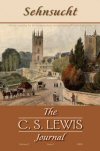
Sehnsucht: The C.S. Lewis Journal, established by the Arizona C.S. Lewis Society in 2007, is the world’s only peer-reviewed journal devoted to the study of C.S. Lewis and his writings. Sehnsucht promotes literary, theological, historical, biographical, philosophical, bibliographical, and cultural interest in Lewis and his writings. The journal includes articles, review essays, book reviews, film and play reviews, bibliographical material, poetry, interviews, and editorials. Designed for scholars from a wide variety of disciplines, as well as learned non-scholars and Lewis enthusiasts, Sehnsucht keeps you current on Lewis’ scholarship and delves deep into the significance and meaning of the Oxford don’s work.
Articles:
- “Diversity in Times of Adversity: Sounding a Horn in Narnia,” by D.G. Kehl
- “Toward a Narnian Valuation of Nature: Participatory Ontology,” by Jeff Sellars
- “Beyond Personality: Recollections of C.S. Lewis,” by
Grayson Carter is the author of Anglican Evangelicals: Protestant Secessions from the Via Media, c. 1800–1850. He is associate professor of church history, primarily serving Fuller Seminary Southwest, and has taught at Fuller since 2002. Prior to that he served as a chaplain and tutor for theology at Brasenose College, Oxford, and taught in the department of religion at Methodist University in North Carolina.
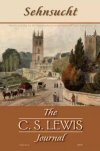
Sehnsucht: The C.S. Lewis Journal, established by the Arizona C.S. Lewis Society in 2007, is the world’s only peer-reviewed journal devoted to the study of C.S. Lewis and his writings. Sehnsucht promotes literary, theological, historical, biographical, philosophical, bibliographical, and cultural interest in Lewis and his writings. The journal includes articles, review essays, book reviews, film and play reviews, bibliographical material, poetry, interviews, and editorials. Designed for scholars from a wide variety of disciplines, as well as learned non-scholars and Lewis enthusiasts, Sehnsucht keeps you current on Lewis’ scholarship and delves deep into the significance and meaning of the Oxford don’s work.
Articles:
- “De Descriptione Temporum: Revisiting C.S. Lewis’ Inaugural Lecture,” by Jean Bethge Elshtain
- “From Vocal Agnostic to Reluctant Convert: C.S. Lewis and C.E.M. Joad,” by Joel Heck
- “What C.S. Lewis Really Did to ‘Cupid and Psyche’,” by Charles Huttar
- “The Lore of Wood and Stone: Magic in The Chronicles of Narnia and The Lord of the Rings,” by Louis Markos
- “Why Father Christmas Appears in Narnia,” by P.H. Brazier
- “C.S. Lewis’ Aesthetics,” by Adam Barkman
Grayson Carter is the author of Anglican Evangelicals: Protestant Secessions from the Via Media, c. 1800–1850. He is associate professor of church history, primarily serving Fuller Seminary Southwest, and has taught at Fuller since 2002. Prior to that he served as a chaplain and tutor for theology at Brasenose College, Oxford, and taught in the department of religion at Methodist University in North Carolina.
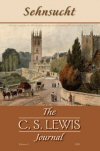
Sehnsucht: The C.S. Lewis Journal, established by the Arizona C.S. Lewis Society in 2007, is the world’s only peer-reviewed journal devoted to the study of C.S. Lewis and his writings. Sehnsucht promotes literary, theological, historical, biographical, philosophical, bibliographical, and cultural interest in Lewis and his writings. The journal includes articles, review essays, book reviews, film and play reviews, bibliographical material, poetry, interviews, and editorials. Designed for scholars from a wide variety of disciplines, as well as learned non-scholars and Lewis enthusiasts, Sehnsucht keeps you current on Lewis’ scholarship and delves deep into the significance and meaning of the Oxford don’s work.
Articles:
- “Adventures Dipped in Myth: The Voyage of the Dawn Treader as Quest Saga,” by D.G.Kehl
- “Is Pain a Problem? J.J. Rousseau and C.S. Lewis on Suffering and Human Nature,” Trevor Shelley and Jacob Seigler
- “C.S. Lewis, Public Intellectual,” by Samuel Joeckel
- “The Lewis-Anscombe Debate: A Philosophical Reformulation,” by James E. Taylor
- “C.S. Lewis on Scripture and the Christ, the Word of God: Convergence and Divergence with Karl Barth,” by P.H. Brazier
- “Enchanting Luna and Militant Mars: The Shorter Planetary Fiction of C.S. Lewis,” by Bruce R. Johnson
Grayson Carter is the author of Anglican Evangelicals: Protestant Secessions from the Via Media, c. 1800–1850. He is associate professor of church history, primarily serving Fuller Seminary Southwest, and has taught at Fuller since 2002. Prior to that he served as a chaplain and tutor for theology at Brasenose College, Oxford, and taught in the department of religion at Methodist University in North Carolina.
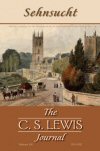
Sehnsucht: The C.S. Lewis Journal, established by the Arizona C.S. Lewis Society in 2007, is the world’s only peer-reviewed journal devoted to the study of C.S. Lewis and his writings. Sehnsucht promotes literary, theological, historical, biographical, philosophical, bibliographical, and cultural interest in Lewis and his writings. The journal includes articles, review essays, book reviews, film and play reviews, bibliographical material, poetry, interviews, and editorials. Designed for scholars from a wide variety of disciplines, as well as learned non-scholars and Lewis enthusiasts, Sehnsucht keeps you current on Lewis’ scholarship and delves deep into the significance and meaning of the Oxford don’s work.
Articles:
- “Jack Lewis and His American Cousin, Nat Hawthorne: A Study of Instructive Affinities,” by D.G. Kehl
- “‘The Curdie Books, Please’: C.S. Lewis’ Co-creative Reading in That Hideous Strength,” by Kirstin Jeffrey Johnson
- “A Friend’s Death: C.S. Lewis’ Disagreement with St. Augustine,” by Jason Lepojärvi
- “‘Answers That Belonged to Life’: C.S. Lewis and the Origins of the Royal Air Force Chaplains’ School, Cambridge,” by Bruce R. Johnson
- “‘A Dreadful Thing’: C.S. Lewis and the Experience of War,” by Timothy J. Demy
- “The Stylistic Achievement of Mere Christianity,” by Gary L. Tandy
- “‘There Is No Emperor’: Merlin and the Ideal State in That Hideous Strength,” by L.S.B. MacCoull
Grayson Carter is the author of Anglican Evangelicals: Protestant Secessions from the Via Media, c. 1800–1850. He is associate professor of church history, primarily serving Fuller Seminary Southwest, and has taught at Fuller since 2002. Prior to that he served as a chaplain and tutor for theology at Brasenose College, Oxford, and taught in the department of religion at Methodist University in North Carolina.
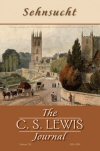
Sehnsucht: The C.S. Lewis Journal, established by the Arizona C.S. Lewis Society in 2007, is the world’s only peer-reviewed journal devoted to the study of C.S. Lewis and his writings. Sehnsucht promotes literary, theological, historical, biographical, philosophical, bibliographical, and cultural interest in Lewis and his writings. The journal includes articles, review essays, book reviews, film and play reviews, bibliographical material, poetry, interviews, and editorials. Designed for scholars from a wide variety of disciplines, as well as learned non-scholars and Lewis enthusiasts, Sehnsucht keeps you current on Lewis’ scholarship and delves deep into the significance and meaning of the Oxford don’s work.
Articles:
- “The Continuing (Ir)Relevance of C.S. Lewis,” by Robert MacSwain
- “Why Lewis’ Poetry Matters,” by Sanford Schwartz
- “C.S. Lewis as Spiritual Mentor by Mail,” by Don King
- “C.S. Lewis: Christian Educator for a Post-Christian Era,” by David C. Downing
- “C.S. Lewis and the Care of Souls,” by Mark Pike
- “Recasting the Discarded Image: C.S. Lewis on the Modern Side,” by Lyle W. Dorsett
Grayson Carter is the author of Anglican Evangelicals: Protestant Secessions from the Via Media, c. 1800–1850. He is associate professor of church history, primarily serving Fuller Seminary Southwest, and has taught at Fuller since 2002. Prior to that he served as a chaplain and tutor for theology at Brasenose College, Oxford, and taught in the department of religion at Methodist University in North Carolina.